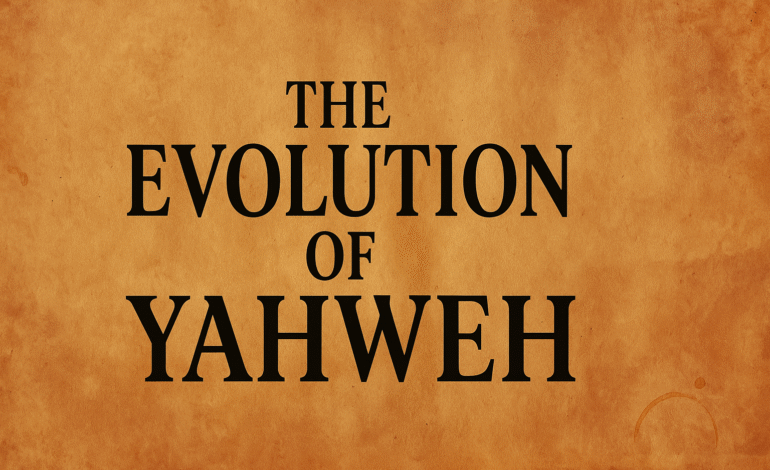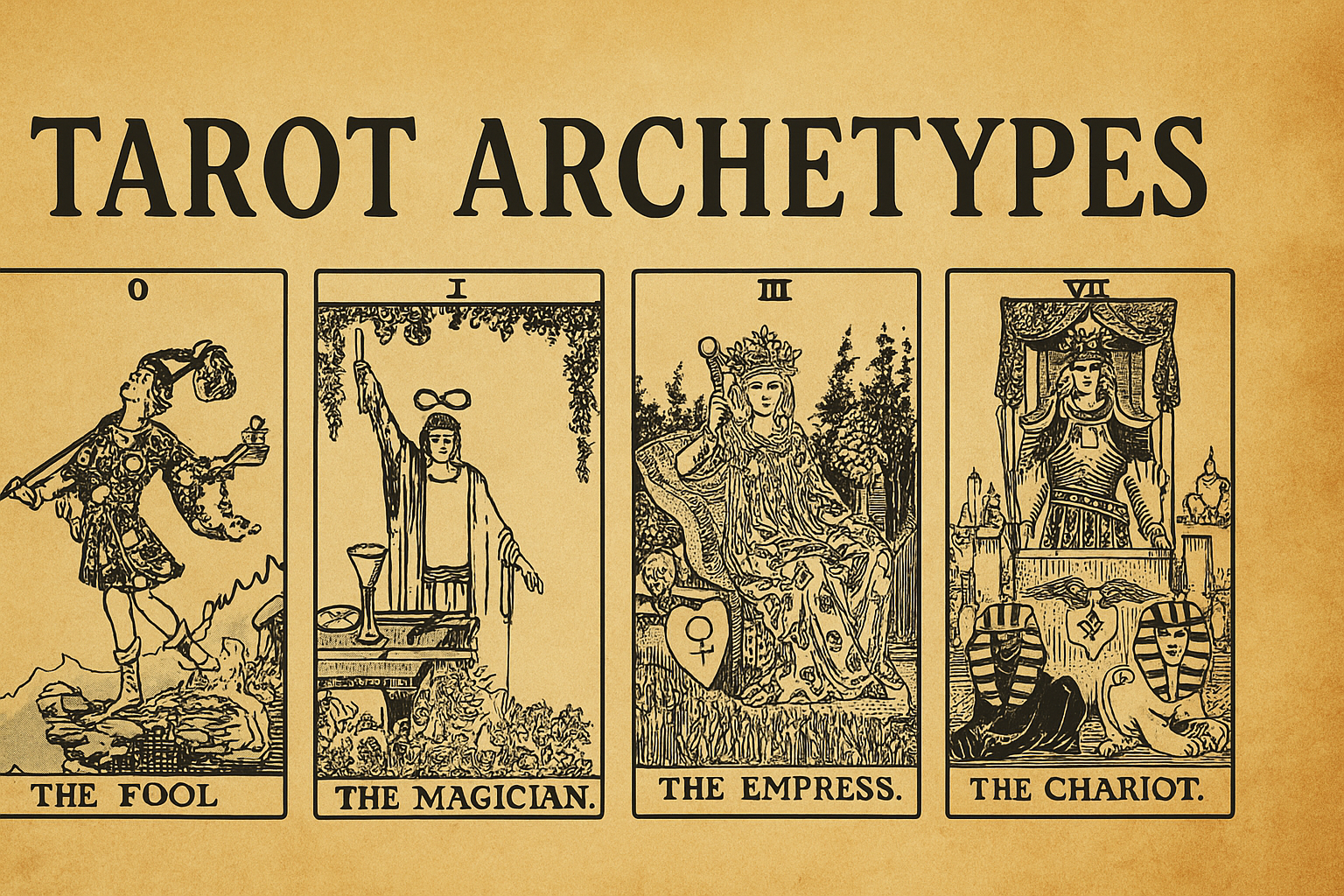
Evolution of Yahweh: The Forgotten Story – Free PDF
Evolution of Yahweh: The Lost History
Â
Download Free Via the 3 Dots
Evolution of Yahweh – The Forgotten Origins of the One God
The Evolution of Yahweh begins long before scripture, in the shadowed cradle of the ancient Near East. It was an age when every mountain, grove, and river carried a spirit’s name, and no single god yet reigned supreme. The book opens within this polytheistic landscape, tracing the slow rise of a tribal deity who would one day become the universal creator. Readers are invited to witness the transformation of belief itself, from the worship of natural forces to the conception of moral divinity.
This work presents more than religious history; it is an archaeological and philosophical excavation of consciousness. The Evolution of Yahweh examines how gods once mirrored the societies that worshiped them. The earliest Israelites were surrounded by cultures whose gods were fathers, mothers, and warriors—reflections of power and fertility within fragile ecosystems. Out of this spiritual ecosystem emerged Yahweh, first as a storm god of the southern deserts, later as the unseen voice of law.
The narrative draws upon inscriptions, Ugaritic tablets, and biblical redactions to reconstruct the path of divine transformation. It reveals a gradual evolution rather than a sudden revelation. Each stage of belief carried remnants of older systems, reshaped through conquest, exile, and interpretation. The Evolution of Yahweh follows this continuity without judgment, showing how myth, memory, and experience converged into faith.
Readers encounter a world where religion was inseparable from landscape. The sacred was found in thunder, in the rain that sustained crops, and in the wind that carried prayers across valleys. Yahweh’s ascent from storm to spirit reflected humanity’s growing need to unify the natural and the moral. This book restores the lost human story behind divinity’s ascent, presenting the god of history as the product of both survival and imagination.
Through elegant scholarship and lucid storytelling, The Evolution of Yahweh bridges archaeology and philosophy. It reintroduces a time when the divine was still plural, when heaven and earth were crowded with meaning. By returning to that forgotten world, readers rediscover the birth of the idea that would shape civilization—the vision of one god emerging from many.
A Journey Through the Bronze Age Mind
The Evolution of Yahweh transports readers into the Bronze Age Levant, a corridor of civilizations where Egyptian, Mesopotamian, and Canaanite influences intertwined. This era was the birthplace of the earliest divine archetypes that would inform later theology. Religion was not doctrine but daily reality, woven through harvest, kingship, and kinship. Every ritual echoed the seasonal rhythm of life and death, revealing a cosmos alive with interdependence.
In this ancient context, gods embodied nature’s forces rather than transcending them. Storms, fertility, and justice were not abstract ideals but living presences. Archaeological evidence from sites such as Ugarit and Megiddo shows that the people worshiped a hierarchy of deities led by El, Baal, and Asherah. These divine figures mirrored political structures—each city with its patron, each tribe with its protector. The book contextualizes Yahweh within this shared Semitic pantheon, presenting him not as an outsider but as a participant in the region’s evolving theology.
The Evolution of Yahweh emphasizes that understanding monotheism requires understanding its polytheistic roots. By tracing parallels between Ugaritic myths and early Hebrew poetry, the author reveals how the vocabulary of faith evolved. Words like “El” and “Elyon,” common in both traditions, show a linguistic continuity that shaped later scripture. Rather than an isolated miracle, monotheism emerges as a culmination of centuries of theological refinement.
Through careful reconstruction, readers see how religion reflected ecology. Droughts and rainfall defined the mood of worship; prosperity and famine determined divine favor. The gods’ rivalries expressed natural conflict, while their reconciliations symbolized renewal. This framework allowed the ancient mind to perceive the sacred in every fluctuation of the world around it.
The Evolution of Yahweh invites reflection on how human perception matured. As tribes settled and language stabilized, so too did theology. Out of a chorus of divine voices, a single theme began to form—the intuition that behind every storm and every birth there was one creative source. In the Bronze Age imagination, the seed of monotheism had already been planted.
The House of El and the Ancestry of Yahweh
At the heart of The Evolution of Yahweh lies the rediscovery of El, the patriarchal god of Canaan, whose attributes would one day merge with Yahweh’s. The book explores how the House of El became the theological blueprint for later monotheism. Known as “El Elyon,” the Most High, he ruled not by thunder but by wisdom. His consort, Asherah, and their divine council formed a cosmic family that mirrored early social order.
The text demonstrates how Yahweh inherited El’s moral and creative authority through cultural synthesis. Early Hebrew poetry and inscriptions preserve titles such as “El Shaddai” and “El Olam,” revealing that Israel’s earliest worshipers invoked El’s names before they knew Yahweh’s. This overlap shows continuity rather than rupture. The Evolution of Yahweh presents the moment of fusion as a psychological revelation: humanity discovering the eternal within the familiar.
Archaeological findings at Bethel, Penuel, and Kuntillet Ajrud are woven into the narrative, grounding myth in material history. These sites, inscribed with blessings of “Yahweh and his Asherah,” suggest that the fusion of El’s patriarchal stability and Yahweh’s passionate energy was still unfolding. The author interprets this process as the unification of heaven’s father and earth’s storm into one coherent identity—the moral creator.
By comparing Ugaritic hymns to Hebrew scripture, The Evolution of Yahweh shows how El’s image of compassionate governance transformed into the covenantal justice of Yahweh. The divine council became angels, and myth became moral law. In this metamorphosis lies the foundation of Western thought—the shift from cosmic hierarchy to ethical monotheism.
The book captures the subtlety of this transition with academic precision. It presents Yahweh not as a replacement for El but as his inheritor, the final synthesis of an age’s longing for order. Through El’s tent flowed the first rivers of faith that would become the ocean of monotheism, a transformation that still defines humanity’s spiritual identity.
Asherah – The Forgotten Goddess
The Evolution of Yahweh restores Asherah to her rightful place in the story of divine transformation. Long before theological reformers erased her, Asherah was the Mother of All Living, the consort of El and the embodiment of life’s continuity. Her presence united heaven and earth through the symbol of the sacred tree, the living axis of fertility and creation. Archaeological discoveries across Israel and Judah reveal her enduring worship even after the rise of Yahweh’s exclusive cult.
The author explores how the suppression of Asherah reshaped the spiritual imagination. In the domestic figurines and inscriptions invoking “Yahweh and his Asherah,” we glimpse a faith once balanced between masculine and feminine principles. The later exile of the goddess mirrored a shift toward transcendence—religion moving from earth to heaven, from embodiment to abstraction. The Evolution of Yahweh interprets this as both loss and evolution, a necessary narrowing that birthed new depth.
Through cross-cultural comparison, Asherah’s image connects with other ancient goddesses such as Ishtar, Hathor, and Cybele. Each represented the cyclical power of renewal, yet in Israel her memory became subtext rather than symbol. The book argues that her essence survived through metaphor—in the figure of Wisdom in Proverbs, the Shekhinah of mysticism, and the compassion within divine justice.
By tracing her transformation, The Evolution of Yahweh uncovers the hidden continuity of the feminine within monotheism. Asherah’s spirit endures wherever the divine is experienced as nurturing, forgiving, or immanent. Her disappearance was not destruction but transmutation, an alchemy that turned image into idea.
This section reframes the goddess not as rival but as reflection. Her absence shaped theology’s silence, and her memory shaped its yearning. The Evolution of Yahweh thus reminds readers that every revelation carries within it the shadow of what was forgotten—the maternal heartbeat of the sacred, still echoing beneath the voice of God.
Baal, Storms, and the Battle for Heaven
The Evolution of Yahweh continues its journey through the storm-lit world of Canaan, where Baal Hadad reigned as the rider of clouds and giver of rain. His thunder was the voice of fertility, his lightning the divine spark that revived the soil. In the Ugaritic myths, Baal’s conflict with the sea god Yam and the death god Mot symbolized the eternal cycle of drought and renewal. This archetypal drama, the battle for heaven and earth, would become the foundation upon which Yahweh’s early image as a warrior god was built.
Through meticulous analysis of ancient texts, the book reveals how Baal’s mythic energy—his dominion over chaos and storm—merged with Yahweh’s southern cult. The author argues that early Israelite poetry preserved in the Psalms still bears the imprint of Baal’s imagery. Verses that describe Yahweh as “riding upon the clouds” or commanding the waters recall Canaanite mythic structure. Rather than erasing Baal’s legacy, Israelite religion reinterpreted it, infusing it with ethical purpose.
The Evolution of Yahweh contextualizes this transformation as both cultural and psychological. In an age defined by scarcity, the god who mastered the storm also mastered fate. When the Israelites adapted Baal’s attributes, they elevated them beyond nature’s cycles. Yahweh became not merely the bringer of rain but the voice of command behind creation itself. The thunder ceased to be a god’s weapon and became the sound of moral revelation.
Archaeological evidence reinforces this continuity. High places and stone altars dedicated to storm deities dot the Levantine landscape, many later converted into Yahwistic sanctuaries. The transition from Baal’s cult to Yahweh’s worship marks the moment when religion shifted from natural appeasement to covenantal relationship. The once-impersonal forces of fertility became expressions of divine will.
The author treats this metamorphosis not as mythological borrowing but as theological evolution. By absorbing Baal’s cosmic power while rejecting his volatility, Yahweh became the unity of order and energy. The battle for heaven was no longer fought between gods, but within the human soul seeking coherence. In this synthesis of chaos and law, the storm became sacred speech, and the tempest gave birth to theology.
From Nomads to Nation
In The Evolution of Yahweh, the story turns toward history—toward the tribes who carried their god from the deserts of Midian into the highlands of Canaan. This migration, both physical and spiritual, marks a pivotal chapter in humanity’s understanding of divinity. Yahweh was once the god of wandering shepherds, invoked amid dust and wind. As those nomads became settlers, his presence transformed from fire in the wilderness to foundation stone in the temple.
The author situates this transformation within the broader archaeological and textual record. Egyptian inscriptions referring to the “Shasu of Yahweh” suggest that his earliest worshipers were desert tribes whose god was tied to storm, war, and survival. When these groups merged with the agrarian peoples of Canaan, Yahweh’s domain expanded from tent to city. This fusion produced a theology of covenant—a partnership between divine protector and chosen people.
The Evolution of Yahweh emphasizes that this covenant was revolutionary. While neighboring cultures sought to appease unpredictable gods, Israel’s relationship with Yahweh was contractual and ethical. The deity demanded justice, memory, and loyalty. What began as tribal allegiance matured into moral monotheism. The god of victory became the god of conscience.
This process unfolded through centuries of social development. The rise of judges, prophets, and kings transformed the fluid tribal confederation into a unified nation. Each generation redefined Yahweh’s character in its own image—warrior, lawgiver, father, and ultimately, spirit. The author illustrates how scripture’s multiple voices reflect this ongoing evolution rather than contradiction.
The movement from nomadism to nationhood mirrors humanity’s transition from instinct to identity. The Evolution of Yahweh interprets this as the awakening of historical consciousness. Yahweh ceased to be a god of place and became the god of purpose. His people, once wanderers among many tribes, now bore a destiny intertwined with divine history. Religion, for the first time, became narrative.
In tracing this passage, the book captures the birth of faith as memory. The deserts that once echoed with thunder now echoed with commandment. The god of tents became the god of the heart, guiding humanity from survival toward meaning.
The Redactors and the Reinvention of God
One of the most illuminating sections in The Evolution of Yahweh explores the scribes and theologians who redefined divinity through the written word. The redactors of the Hebrew Bible were not passive transmitters but architects of belief. Through selective preservation and inspired synthesis, they shaped centuries of oral tradition into a coherent theology. In doing so, they turned the evolving Yahweh of many voices into the singular God of scripture.
The author examines how this editorial process reflected the psychological and political needs of a fragmented people. After centuries of division and exile, unity demanded narrative order. The redactors of Deuteronomy, Isaiah, and the Psalms reinterpreted older myths—replacing divine plurality with singular authority. What had once been the council of gods became the voice of the Lord alone. This was not erasure but elevation, an act of spiritual compression that distilled chaos into meaning.
Textual evidence supports this layered composition. Fragments of early poetry within the Pentateuch and Prophets reveal traces of older cosmologies. The Evolution of Yahweh presents these not as contradictions but as fossils of faith—remnants of humanity’s earliest encounters with the sacred. Each redactor added dimension, transforming mythic narrative into moral vision.
The book portrays the redactors as visionaries who turned memory into scripture. Their work preserved the echoes of El, Baal, and Asherah but reframed them within the drama of covenant and justice. In this process, Yahweh absorbed every divine archetype—creator, king, lover, and judge—emerging as the totality of human spiritual experience.
This editorial revolution marked a new phase in religious thought: the written word as revelation. Once dependent on sacrifice and ritual, humanity’s relationship with the divine became literary, interpretive, and reflective. The Evolution of Yahweh suggests that theology itself evolved as language evolved—the act of writing transforming the ineffable into moral instruction.
Through their pens, the redactors forged not only scripture but civilization’s conscience. By merging history with myth, they redefined what it meant to know God: not through vision or thunder, but through understanding.
Exile, Philosophy, and the Birth of Monotheism
The Babylonian exile stands as the crucible in which the Evolution of Yahweh reached maturity. When Jerusalem fell and the Temple burned, a people who had tied their god to land and lineage were forced to imagine him beyond both. In captivity, Yahweh was no longer king of a nation but ruler of the cosmos. Out of loss arose transcendence.
The author traces how this trauma reshaped theology into philosophy. Deprived of rituals and homeland, the exiles turned inward. Prophets like Deutero-Isaiah proclaimed a universal God who created both light and darkness, good and evil—a radical assertion that divine will encompassed all opposites. This was the birth of true monotheism, a vision forged not in triumph but in reflection.
The Evolution of Yahweh situates this transformation within a broader intellectual context. Exposure to Persian dualism and Babylonian cosmology challenged Israel’s thinkers to redefine the divine beyond local identity. The resulting synthesis produced a God both personal and absolute—one who transcended nature yet remained immanent in moral law. The exile thus marks the moment when theology became metaphysics.
In this chapter, archaeology and scripture intertwine. Cuneiform tablets, prophetic writings, and psalms of lament reveal a civilization reinterpreting its pain through theology. The author’s analysis demonstrates how suffering became sacred text, and despair became doctrine. The exiles’ Yahweh was no longer the god of storms or kingship, but of endurance—the invisible axis holding existence together.
The narrative underscores that the evolution of faith mirrors the evolution of consciousness. As the exiled people learned to see their god in absence, humanity as a whole learned to see meaning beyond form. The Evolution of Yahweh captures this profound metamorphosis: the transformation of a tribal deity into the foundation of moral philosophy, a journey from geography to infinity.
From Yahweh to Theos
The Evolution of Yahweh next explores the meeting of East and West, where the Hebrew God encountered Greek philosophy. In this intellectual crossroads, Yahweh became Theos, the God of reason as well as revelation. The fusion of Hebrew spirituality with Hellenistic thought marked the most dramatic phase in the divine evolution — the moment when faith entered the realm of metaphysics.
The author traces this synthesis through the cultural exchanges of the late Persian and early Hellenistic periods. Jewish thinkers of Alexandria, such as Philo, reinterpreted scripture through Platonic ideals. The Hebrew conception of divine will merged with the Greek notion of the Logos — a rational principle ordering the cosmos. The result was a God both transcendent and intelligible, no longer defined by territory or tribe but by universal reason. In this transformation, the Evolution of Yahweh reveals how theology became philosophy.
This phase did not abandon the Hebrew tradition; it expanded it. Prophetic vision evolved into philosophical discourse, and faith began to speak the language of logic. The Yahweh who once thundered from Sinai now reasoned through the mind of the sage. The author frames this as the maturation of consciousness — the shift from mythic imagination to reflective understanding.
Through detailed scholarship, the book illustrates how concepts of soul, virtue, and divine unity entered Jewish, Christian, and later Islamic thought. The Yahweh of history became the God of eternity. This merging of Eastern devotion and Western rationalism laid the foundation for classical theology, science, and moral philosophy.
In this synthesis, the divine image became internalized. The Evolution of Yahweh shows that humanity’s growing intellectual capacity did not destroy faith but refined it. The voice once heard in the wilderness now spoke within the mind itself, proclaiming that truth and divinity were reflections of the same cosmic order.
The transformation from Yahweh to Theos was not a replacement but an expansion — the infinite awakening of an idea that had journeyed from mountain thunder to metaphysical light.
The Psychological and Anthropological God
The Evolution of Yahweh then turns inward, exploring how the divine, once external, became the mirror of the human psyche. In this final metamorphosis, God ceases to be an object in the heavens and becomes a process within consciousness. The author traces this development through philosophy, psychology, and anthropology, revealing that the story of Yahweh is also the story of human self-awareness.
As civilization advanced, moral complexity deepened. The prophets who once spoke for God became the first voices of conscience. Their proclamations of justice and mercy reflected inner evolution as much as divine command. The Evolution of Yahweh situates this transition in the rise of reflective ethics — humanity learning to perceive divinity as the law within rather than the power above.
Drawing from comparative religion, the text examines how psychological interpretation transformed theology. Thinkers from Spinoza to Jung recognized that God functions both as symbol and reality — the highest projection of human ideals. The Yahweh who once judged nations now represented the integrative force of the psyche, reconciling chaos and order within the soul.
Anthropologically, the book situates this evolution as part of humanity’s survival strategy. The idea of a moral universe unified tribes, restrained violence, and elevated cooperation. In the Evolution of Yahweh, God becomes the mirror through which the species learns empathy and discipline — an adaptive structure of meaning that evolved alongside language and culture.
The author avoids reductionism by showing that spiritual and psychological truth are not opposites but mirrors. The inner and outer evolve together, each shaping the other through history. Yahweh’s long transformation thus culminates in the discovery of the divine self — the realization that awareness itself is sacred.
By reframing God as both projection and presence, The Evolution of Yahweh invites readers to see theology as anthropology’s highest art: the study of the human mind reaching toward its own infinite reflection.
The Feminine Returns
In the later chapters of The Evolution of Yahweh, the feminine that was once suppressed in ancient Israel’s reforms reemerges within mystical and philosophical traditions. What was lost in form returns in essence. The goddess who once stood beside El and Yahweh as Asherah now rises again as Wisdom, Shekhinah, and Sophia — the personified spirit of divine understanding.
The author traces this reappearance through post-exilic and Hellenistic literature. In Proverbs, Wisdom speaks as the companion of creation, echoing the ancient feminine voice of Asherah. Later Jewish mysticism presents the Shekhinah as the indwelling presence of God, exiled with humanity and longing for reunion. Early Christian writers and Gnostic philosophers continued this pattern, identifying the Holy Spirit or divine Sophia as the eternal feminine principle within God.
The Evolution of Yahweh presents this as the symbolic restoration of balance. The patriarchal monotheism of the prophets, though revolutionary, had severed the unity of masculine and feminine archetypes. Through the rediscovery of the divine feminine, mysticism sought to heal that fracture. The feminine returns not as rival but as harmony — the necessary counterpart that completes the image of the One.
Philosophically, this reintegration mirrors the human psyche’s need for wholeness. Just as creation requires polarity, so consciousness seeks equilibrium between will and compassion. The book suggests that every return of the feminine, from medieval mysticism to modern psychology, represents another cycle in the ongoing evolution of Yahweh — the divine learning to recognize itself in balance.
The author’s narrative connects these ideas to a broader cosmic pattern: creation as dialogue, divinity as relationship. The Evolution of Yahweh shows that unity without duality is sterile, but duality without unity is chaos. In restoring the feminine, humanity restores the heartbeat of the sacred itself.
The return of Asherah’s spirit through wisdom traditions marks the completion of the divine arc — from division to reunion, from suppression to revelation.
The Future of God
The Evolution of Yahweh concludes not as theology, but as vision. Having traced the transformation of divinity from storm god to universal consciousness, the author asks what comes next. If God has evolved through human understanding, then the story is still unfolding. The future of Yahweh is the future of humanity’s own awakening.
The final chapter presents this idea with scholarly restraint yet poetic clarity. Just as the ancients sought to unify heaven and earth, modern consciousness seeks to unify science and spirit. The next evolution, the author proposes, lies not in belief but in integration — a synthesis of knowledge and reverence that transcends division. The God of tomorrow will not demand temples, but awareness; not sacrifice, but understanding.
The Evolution of Yahweh situates this vision within the continuum of history. Every stage of divine transformation mirrored a stage of human growth: myth gave rise to law, law to philosophy, and philosophy to self-realization. The process is not complete. The modern crisis of meaning, the book suggests, is the labor of the next revelation — the birth of a more holistic spirituality that recognizes consciousness itself as sacred.
In closing, the author does not proclaim final answers but extends an invitation. The evolution of Yahweh is the evolution of being, and every generation contributes another verse. Humanity, having externalized its gods and internalized its morality, now stands on the threshold of synthesis — a world where the divine is both within and without, known through unity rather than division.
The concluding pages return to the beginning: the wind, the storm, the whisper on the mountain. The voice that once commanded now invites. The same mystery that stirred in the deserts of Canaan continues to speak through every searching mind. The Evolution of Yahweh ends where it began — in awe of the infinite journey of the One becoming conscious of itself.
Read More:Â The Real Cursed Son Of Noah: Japheth The Conqueror



